

At this point in their career, seven albums in, Amadou and Mariam have mastered a particular sort of contrast. Their lyrics touch on difficult political matters, usually issues concerning their native Mali, while their music is consistently joyful, catchy and infectious. At first listen, the juxtaposition between their words and peppy rhythms is jarring, but eventually the two elements integrate to form a new kind of protest music. The blind couple from Mali is rousing their listeners to action, urging them to carry the flame. To their contemporaries, the message seems to have gotten through, as many of them make appearances on their latest, Folila. “Dougou Badia” takes advantage of the crooning power of Santigold, while “Wily Kataso” gets a hand from TV on the Radio. Even Jake Shears, of the Scissor Sisters, sings backup on the soothing “Metemya,” as good a distillation of the band’s appeal as anything from Welcome to Mali. It’s fair to say that Folila, despite its lineup, sounds largely the same as its predecessors, but it’s also fair to say that’s a good thing. There aren’t many bands that know who they are as well as these two, and even fewer who can maintain such quality.

Audio clip: Adobe Flash Player (version 9 or above) is required to play this audio clip. Download the latest version here. You also need to have JavaScript enabled in your browser.

Party Foundation Monument, Pyongyang. Images courtesy of DOM Publishers and Philipp Meuser.

The
Architectural and Cultural Guide: Pyongyang looks like any other city book for savvy travelers. It’s crammed with luscious maps and photographs and formatted in two slender, easy-to-carry volumes. But the guide is really a kind of provocation, since it’s virtually impossible for citizens of democratic countries to visit the North Korean capital city, home to three million people, unless they enter through China and travel with a government-led tour group. And the city’s only sanctioned tourist destinations seem to be its bombastically over-scaled memorials, museums, and sports arenas. The book doesn’t offer up any obvious tourist attractions like shopping streets, historical districts, or grassy parks, but instead formidable concrete government buildings and apartment towers. Not surprisingly, estimates are that the city welcomed only a few hundred tourists last year. This is not Paris.
Slideshow
(more…)

Illustration: Mark Hearld/Candlewick Press

Like it or not, spring is arriving several weeks ahead of schedule in most places this year. The world outside began coming back to life long before the official start of the season and after the very mildest of winters. Time will tell if this is merely a freak aberration or a harbinger of the new normal to come. But since we’re able to venture back outside, the time is ripe to teach our children all about the natural wonders to be found out there. It’s the perfect opportunity to tell them about the events that take place throughout the cycle of the seasons, or at least what things used to be like.
The recently released illustrated children’s book
Outside Your Window is a guide to bird migrations, blooming flowers, foraging squirrels, and so many other yearly phenomena that repeat themselves annually in line with the internal rhythms of the planet. Nicola Davies’ descriptive vignettes and Mark Hearld’s Caldecott Medal-worthy drawings brilliantly capture the astounding magic tricks that the world produces with reliable ease. Whether the scene outside your child’s window is that of rainbows and bucolic pastures of sheep or simply tomatoes being grown on the fire escape, this book celebrates it with an equal measure of awe.
(more…)
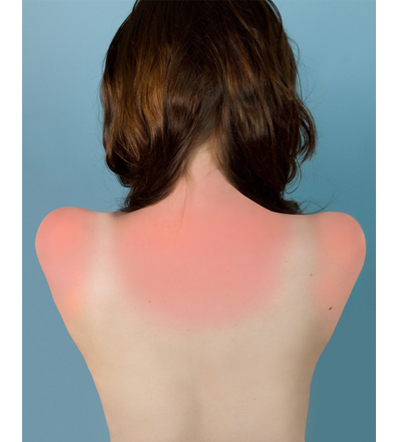
Photograph by Brea Souders

During a
recent conversation with PLANET about his book
Ghost Country, Jordan Sullivan mentioned that his first show as curator will be on view at Clic Gallery in Soho opening March 28th. The show, titled
The Wild & The Innocent, is an exploration of the human body juxtaposed with natural landscapes, composed of imagery from 30 emerging artists and their personal archive. The work seeks to rethink and reframe our relationship with the environment, and explore the duality between the infinite and the finite.
The Wild & The Innocent is also a celebration of our relationship with natural life and its awesome beauty. Although humans can be separated from nature, such a separation causes anxiety in most and drastically reduces the experience of life.
PLANET spoke with Sullivan about the show, which will feature artists Skye Parrot, Collin LaFleche, and Kohey Kanno among others.
Slideshow
(more…)
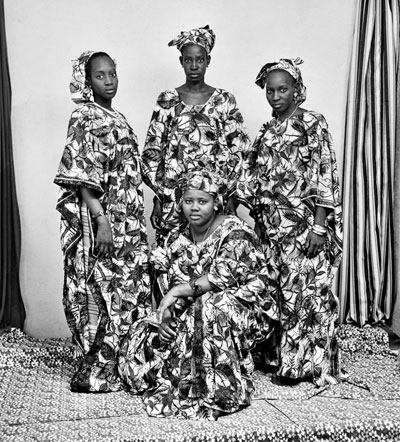
Studio Malick, Bamako, 16 and 17 September 1977 © Malick SidibÈ

When we see photographs from Africa, they’re often dispatches from war or famine zones. It’s a sad truth that there are enough “hot spots” in Africa to supply us with a steady stream of such images for many years to come. But there are happier sides to Africa too, some of which have been documented by native photographers like Malick Sidibé.
Sidibé, who was born in the 1930s, has spent a long career taking portraits of his fellow citizens in Bamako, Mali. Up until recently, few Malian families could afford to buy cameras, so it was customary for people to visit a studio photographer when they wanted to document something significant–from the birth of a baby to a new hairstyle or motorbike. In Sidibé’s portraits you see pride and a sense of occasion, but there’s also a playfulness in the way he gets his subjects to pose, shirt-sleeves rolled up, sunglasses covering their eyes, mimicking styles from the covers of magazines and pop music albums.
Slideshow
(more…)
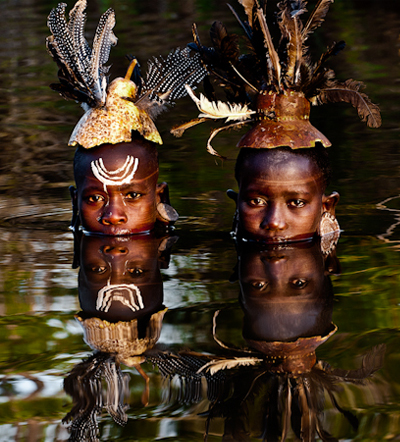
Suri Children by Giordano Cipriani

Giordano Cipriani won Grand Prize in the General Category of our 4th Annual Global Travel Photo Contest. Cipriani is an Italian photographer who began his career as an underwater documentary photographer. His work is influenced by the human body, the element of water, and his travels, which have earned him shows everywhere from Japan to Washington, D.C. Of his winning shot, Cipriani says, “I loved my journey to Ethiopia discovering the Suri tribe. Shots of that beautiful culture came out from my heart before from my lens.”
Slideshow
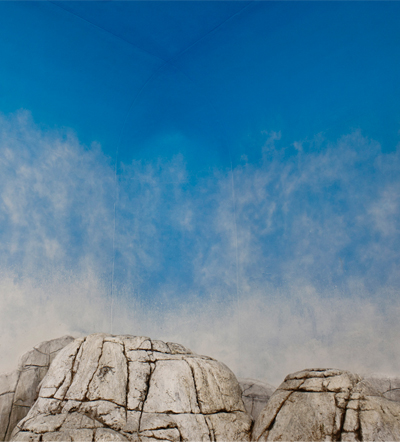
All images by Daniel Kukla

Born with an inquisitive passion for science, Daniel Kukla documented 12 zoos across the U.S. and Europe, capturing a synthetic peculiarity we often take for granted.
Captive Landscapes, unravels the artificial habitats of zoos– spaces which are normally hardly paid attention to. Taking inspiration from his experience working in the natural history department of a museum and his most cherished companion, his pet octopus, Kukla’s work has been shown at the Milk Underground show last autumn and has recently completed a series of work that explores a phenomenon that is a direct result of global warming, known as post-glacial rebound.
What was intriguing to you about artificial landscapes?
I’ve long been fascinated by the educational and research mission of zoos and yet equally frustrated. After visiting countless zoos I began to notice the common of manufacturing theatrical environments for the enclosures and the all too familiar experience of expecting to see the inhabitant, but being confronted by a seemingly empty habitat. I began to photograph these enclosures devoid of the animal or with it on the periphery. Without the distraction of the inhabitant we see the dressed-up concrete and metal surroundings for exactly what they are.
Slideshow
(more…)
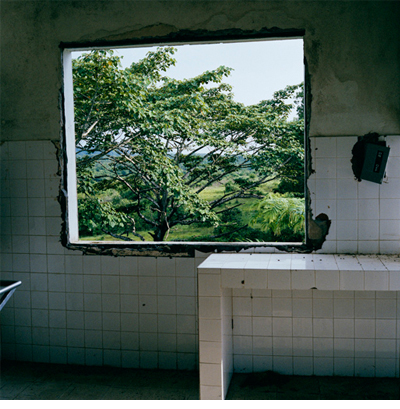
Tim Hetherington Untitled, Liberia, 2003 Digital C-print © Tim Hetherington, Courtesy Yossi Milo Gallery, New York


At the time of his death, in a Libyan mortar strike in April of 2011, Tim Hetherington was one of the most well-known and respected conflict photographers working. This was due in part to his role as co-director on Restrepo, the 2010 documentary that followed the day-to-day life of an American platoon in Afghanistan in immediate, intimate detail.
But Hetherington was entrenched in more than filmmaking, and more than Afghanistan’s fighting. His approach to photojournalism meant pushing the boundaries of image-making, and working across several types of new and digital media to build a more communicative message. But as grand a scale as he worked on, Hetherington’s project was always to immerse the viewer in an individual’s story. His larger body of work—photographing civil war in West Africa, a short film, portraits, interviews, and firsthand accounts of life in war zones—depends on that same depiction of the personal used so grippingly in Restrepo.
The first major exhibition of Hetherington’s photographs, opening at the Yossi Milo Gallery in April, spans his short and extraordinary career. Protagonists appear from all sides, and at all moments in the day life. Liberian women juggle babies and handheld missiles. American soldiers sleep in one photo and wrestle in the next. Hetherington was adept at catching the beauty of these terrains and the bleakness of a war zone in the same frame. This makes for compositions both aesthetically gorgeous and emotionally volatile, and a collection of work that offers as many moments of peace as it does conflict. Hetherington’s legacy will be his gift of seeing the whole picture.
Slideshow
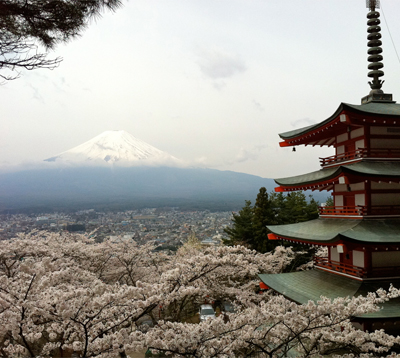
All images courtesy Supply & Demand Integrated


Lucy Walker’s Academy Award-nominated documentary begins with the event itself. A massive torrent of ocean water engulfs a modest coastal town, destroying everything in its path. Onlookers are heard crying out from behind the camera’s position, situated safely upon a hilltop, as the slow-motion obliteration unfolds below. Some on the ridge race down to bring others to safety in the final moments before the water reaches them. A few of them are successful. Others lose their own lives trying.
The found footage is a terrifying reminder of just how devastating the tsunami was when it hit the Pacific coast of Northern Honshu over a year ago now. The numbers are well-known: a 9.0 magnitude earthquake; a tidal wave that topped 130 feet in at least one location; 22,000 dead or missing. But to experience the disaster in real time lays bare the true magnitude, complete with the emotional trauma of watching an entire community of buildings, homes, cars, and the people who fill them whisked away in a matter of moments.
“The Tsunami and the Cherry Blossom,” which airs later this year on HBO, deals with the shock and heartbreak of that horrible event. But it’s what followed the tragedy that occupies the heart of the movie. Ms. Walker, the filmmaker responsible, tells
Planet she was profoundly inspired by the boldness and grace she saw in the Japanese people, particularly in the evacuated disaster zone, as the country braced itself for a long painful recovery in the aftermath of so much destruction.
(more…)
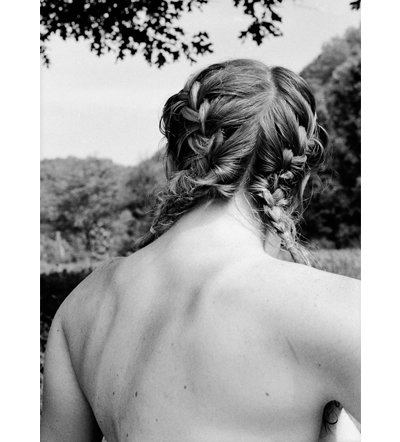
All photographs by Cass Bird

For two consecutive summers, photographer Cass Bird visited Sassafras, Tennessee with a group of beautiful, masculine young women from New York City. She brought along party dresses and tutus, and asked the women to forego cutting their hair in the months leading up to the second summer’s shoot.
Rewilding, Bird’s new book, is the photographic story of these summers – an inquiry into and observation of the broadening paradigms through which we understand gender. The photographs in
Rewilding are intriguing; they evoke a sense of the ethereal while exploring the spaces beyond the generally accepted confines of masculinity and femininity.
As with all of Bird’s work,
Rewilding’s depth is uncontrived, its beauty authentic. Bird will be at the Lead Apron in Los Angeles on March 15 and at Dashwood Books in New York City on March 22.
In the introduction to the book, Jack Halberstam writes about how you depict gender as contrast. What do you think of this idea?
I had actually never thought about it in those terms. I think that gender is expressed as a contrast, and I am curious about how that contrast or that divide fades away at times. There’s a hetero concept where if you put a masculine girl into a hetero-dress, she’ll be cured of her masculine nature. But it actually does the opposite: if you stick a masculine girl in a tutu or a dress, she looks even more masculine.
Slideshow
(more…)

![]()
![]()




 Facebook
Facebook Permalink
Permalink Digg
Digg Reddit
Reddit LinkedIn
LinkedIn StumbleUpon
StumbleUpon Tumblr
Tumblr












